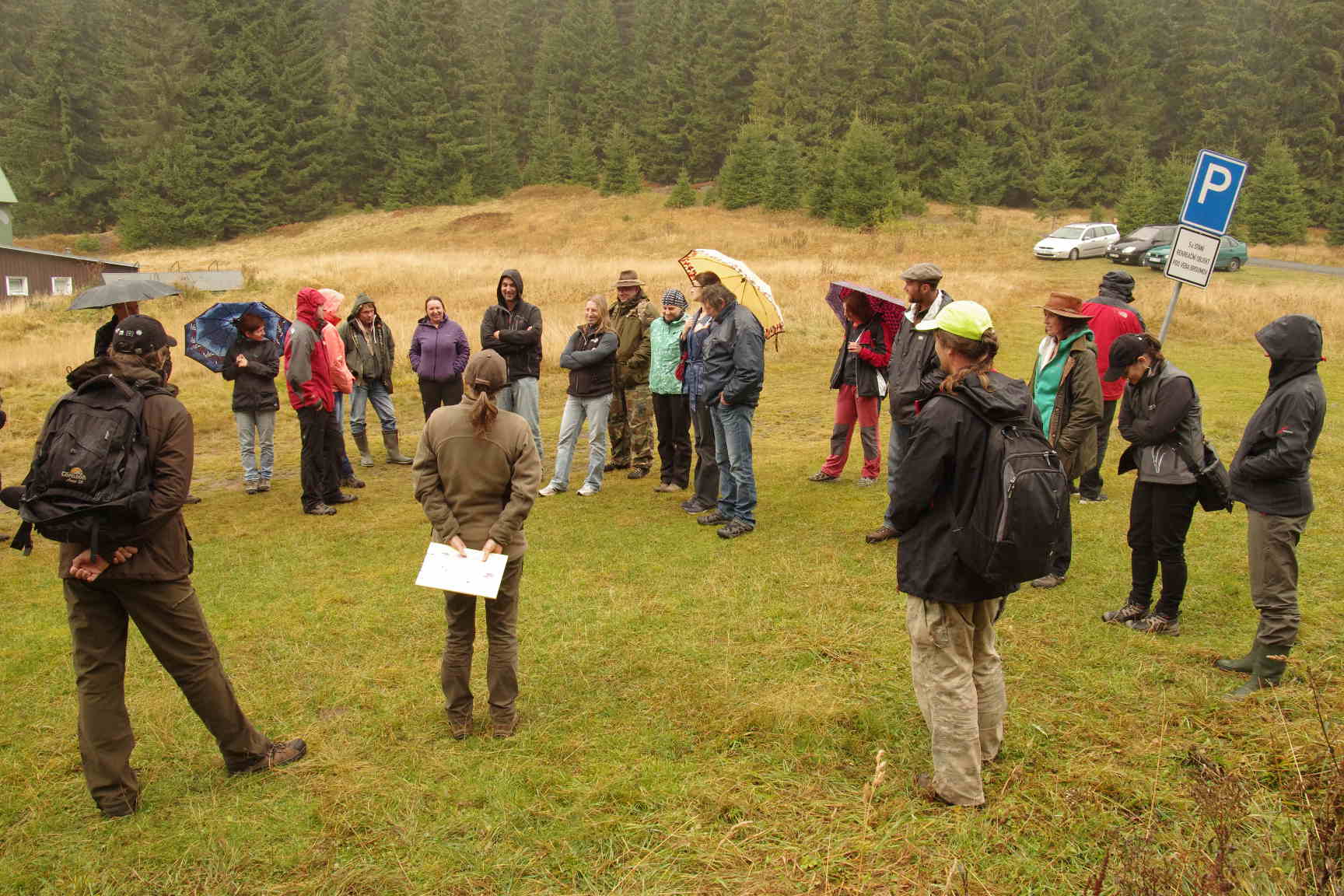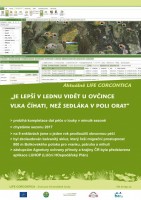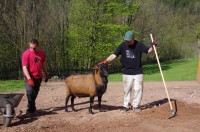2015 - We have met in the meadows for three years
In 2015, we met in the meadows for the third year in a row
The third season of management works ended at the end of 2015. The LIFE CORCONTICA project is now three and a half years old. It is thus time for evaluating our work and achievements in 2015. You can read about the overall progress of activities, achievements and project performance for the three and a half years in the side menu under the tab Activities and Outputs.
In 2015, as part of Activity A1, we ran the 3rd call for applications for management subsidies, and we succeeded in drawing another 16 management plans. We concluded the activity in March 2015.
Activity A2 is now near completion. Several changes were made to the activity in 2014 and 2015, which were successfully implemented after EU approval. Two hand-driven mowers were acquired as property of one of Daphne’s partners, and they have worked the whole season.
As in previous years, we continue our activities C.
Works have proceeded on 363 hectares of work sites. A total of 35 farmers have been managing 47 enclaves. The meadows were grazed by 2165 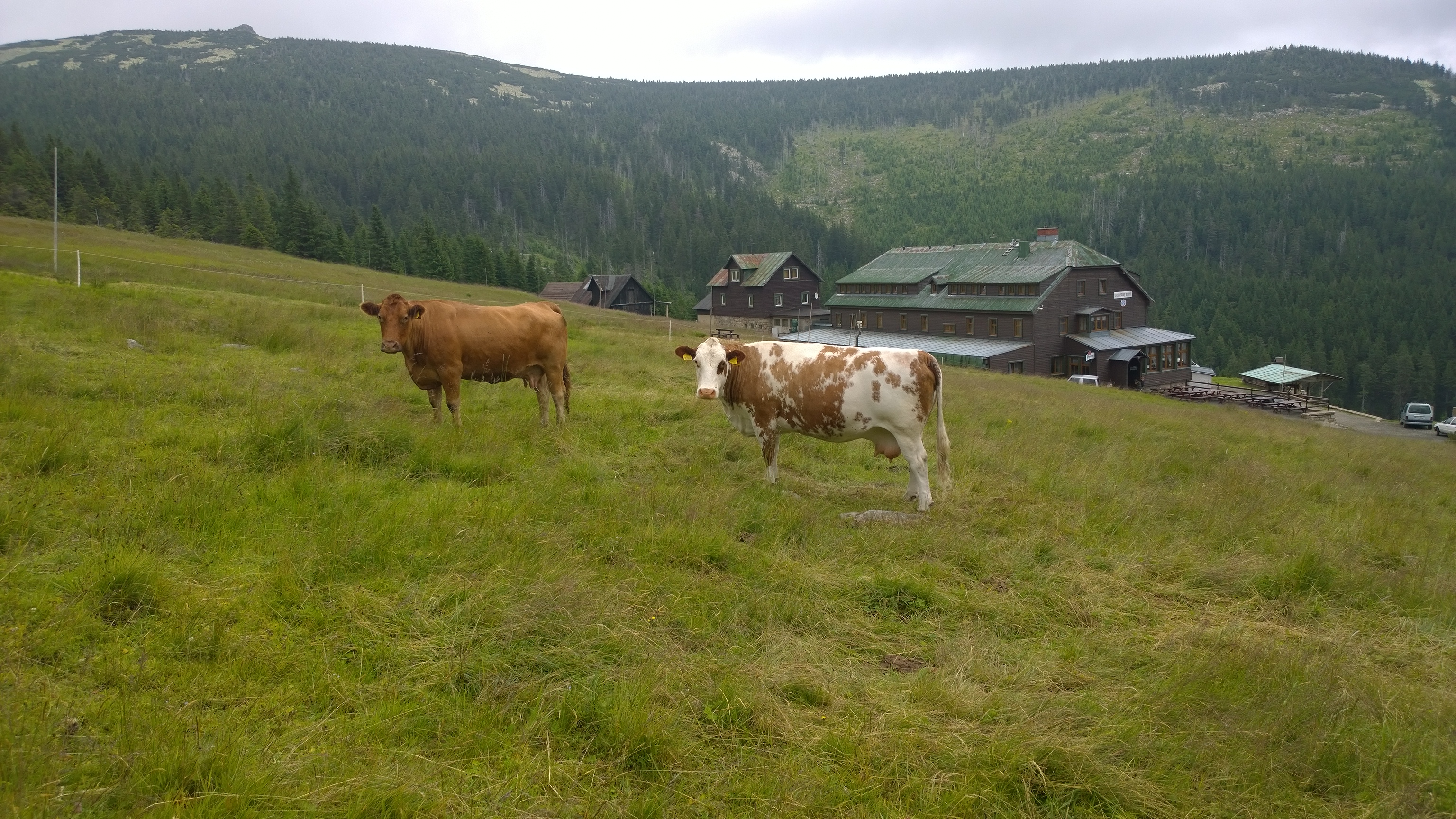 farm animals, which is another 300 heads more than in the previous year. The figure is made up by 90% sheep. Manual or machinery mowing was
farm animals, which is another 300 heads more than in the previous year. The figure is made up by 90% sheep. Manual or machinery mowing was
done on 132 hectares of meadows. This year too,
we have tried to complement the management mosaic with additional, not quite ordinary management activities. They include spring harrowing, mowing of ungrazed leftovers, raking and leaving of unmown strips in meadows.
We have been seeing the farmers’ increased efforts to make the public better understand these interventions, which are not always easy to explain.
Our management mosaic was visible in several enclaves this year.
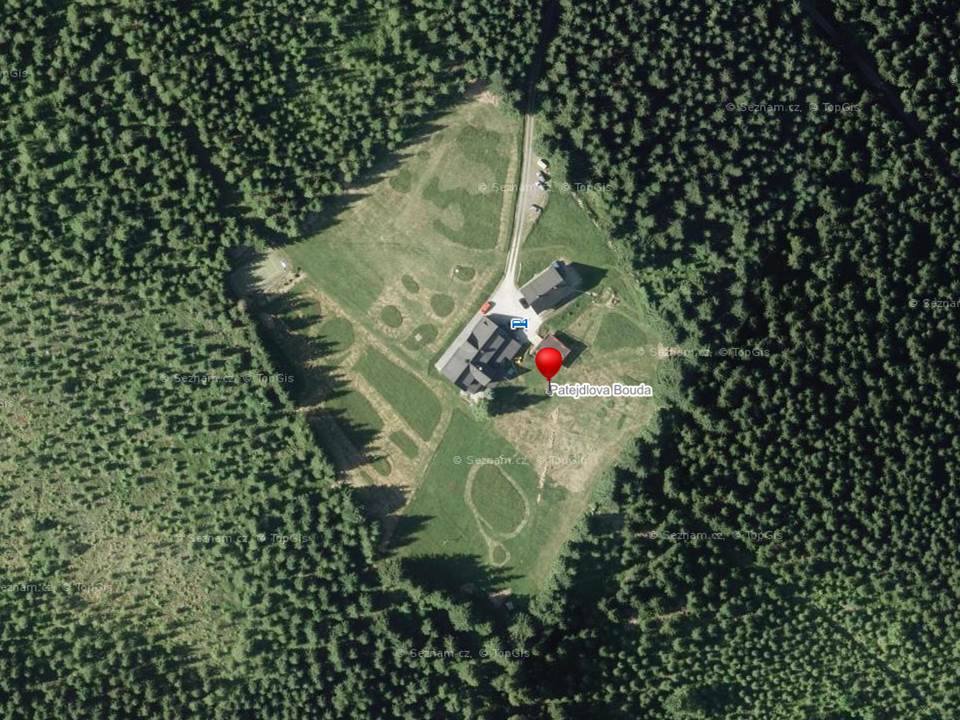
People at Patejdlova bouda played with the mowing mosaic in both time and space, and many living things found the right habitats. It would certainly have won the prize for the best mosaic mowing in the Krkonoše.
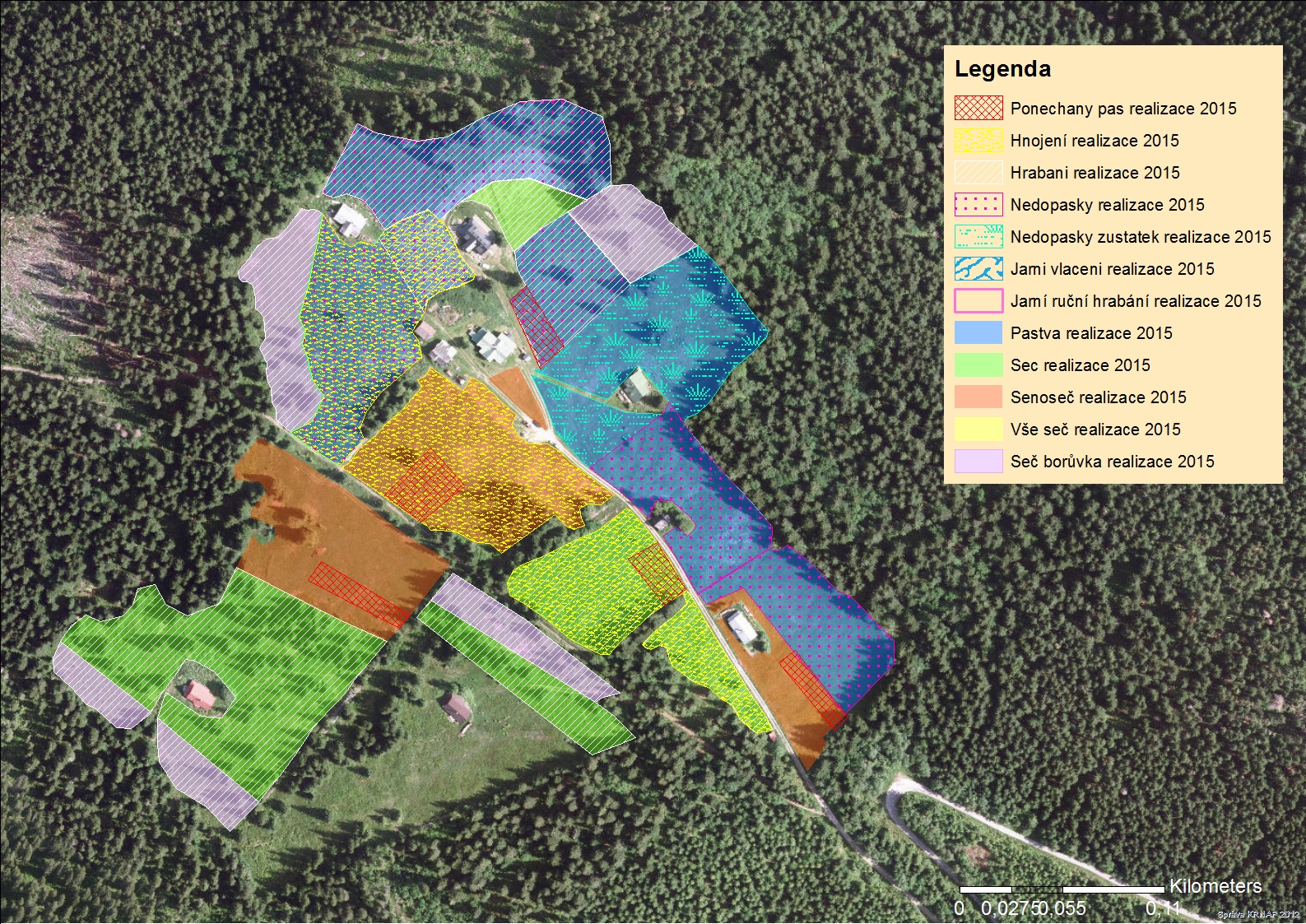
Another interesting mosaic of various management types (harrowing, grazing, mowing and more) can be demonstrated in the Severka enclave, where management was restored only last year after a many years’ break.
An integral component of meadow management is activities such as suppression of invasive plant species and self-seeding (activity C2) as well modification to the hydrological regime, clearance of stones from meadows and minor landscaping (removal of billbery bushes, fertilisation).
In the course of the project, we managed 43 unique hectares (most of them repeatedly). The change is best visible in the Friesovy Boudy enclave, where meadows previously impassable for sorrel are now sprouting different meadow species.
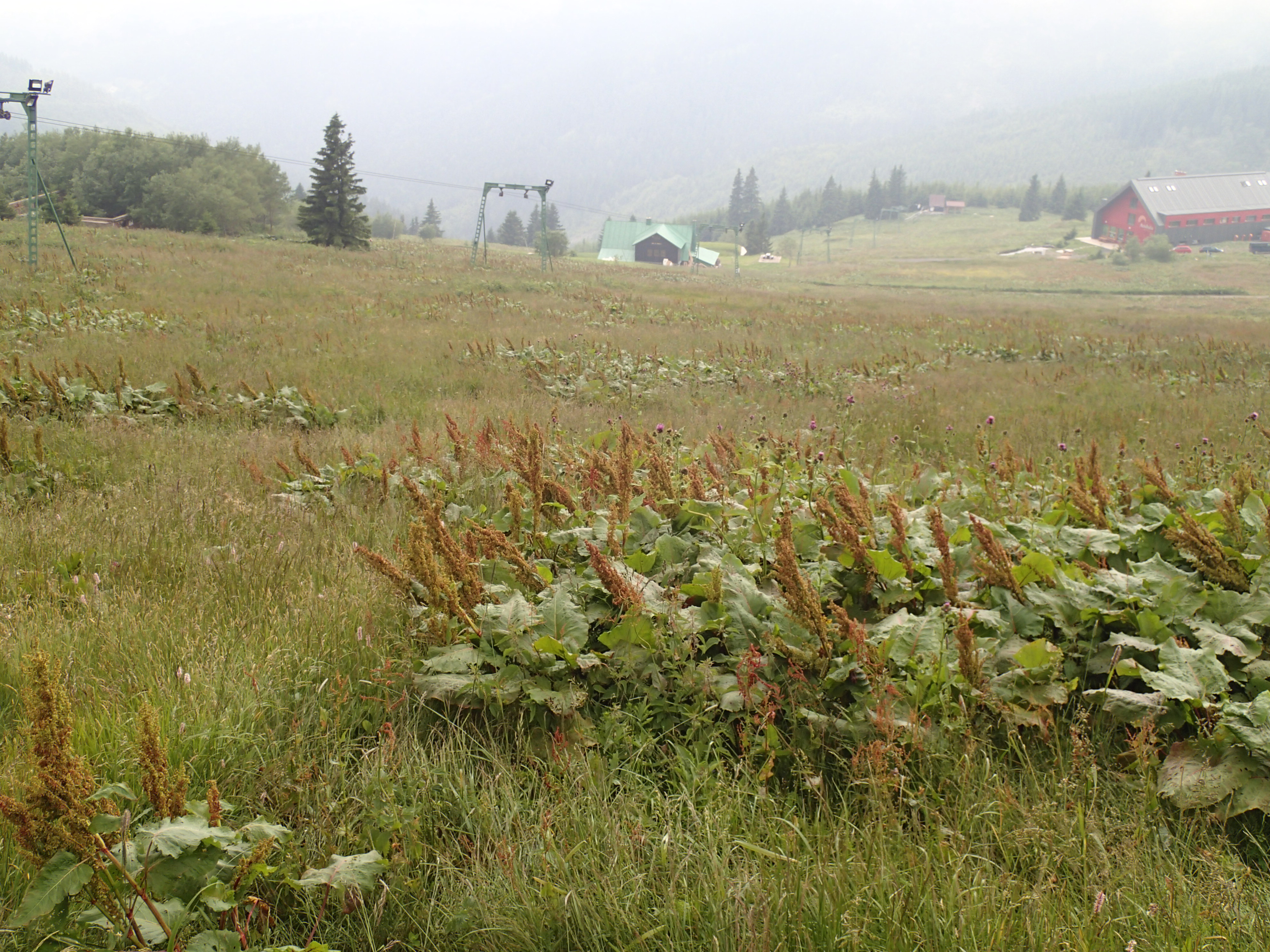
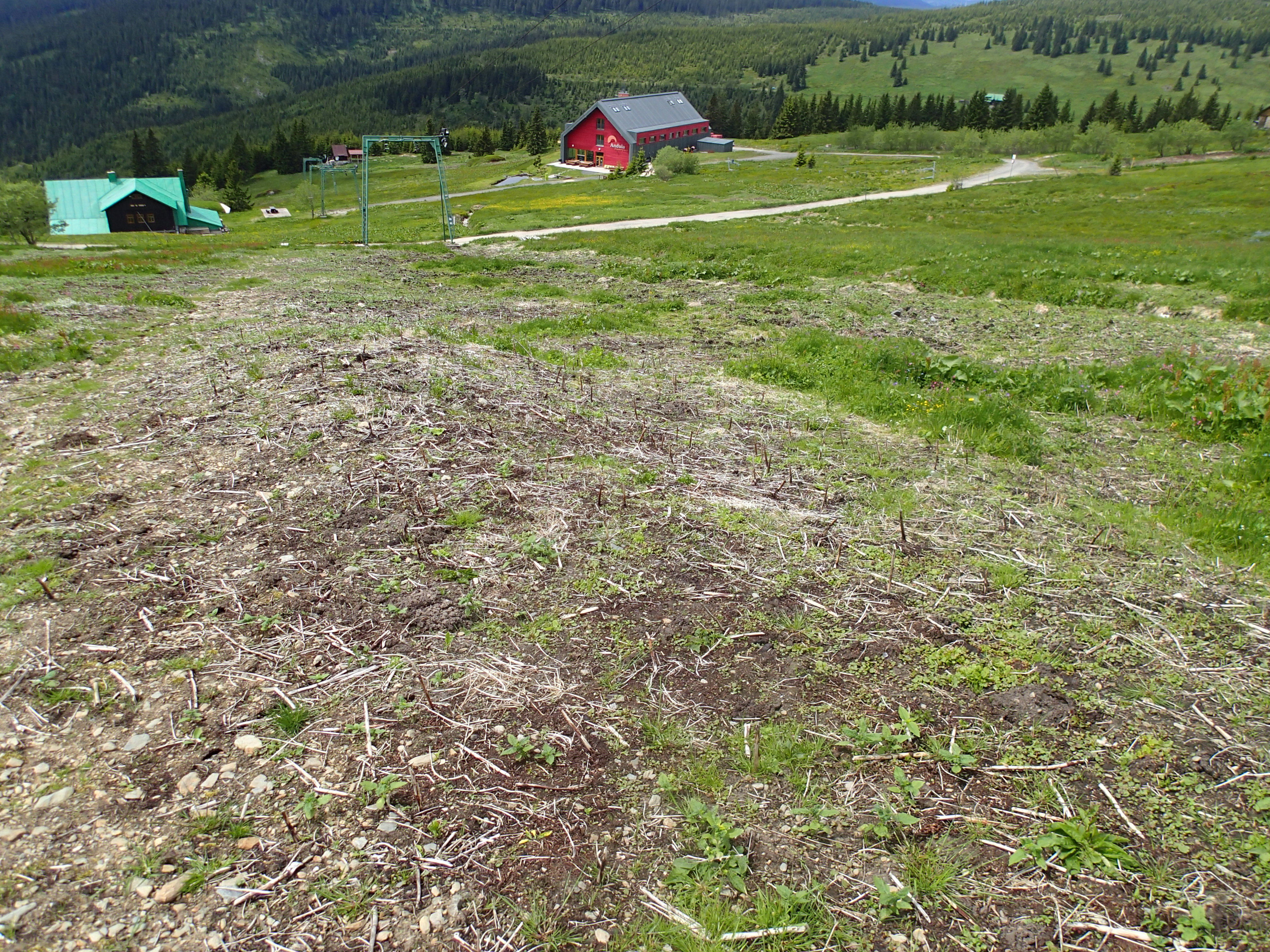
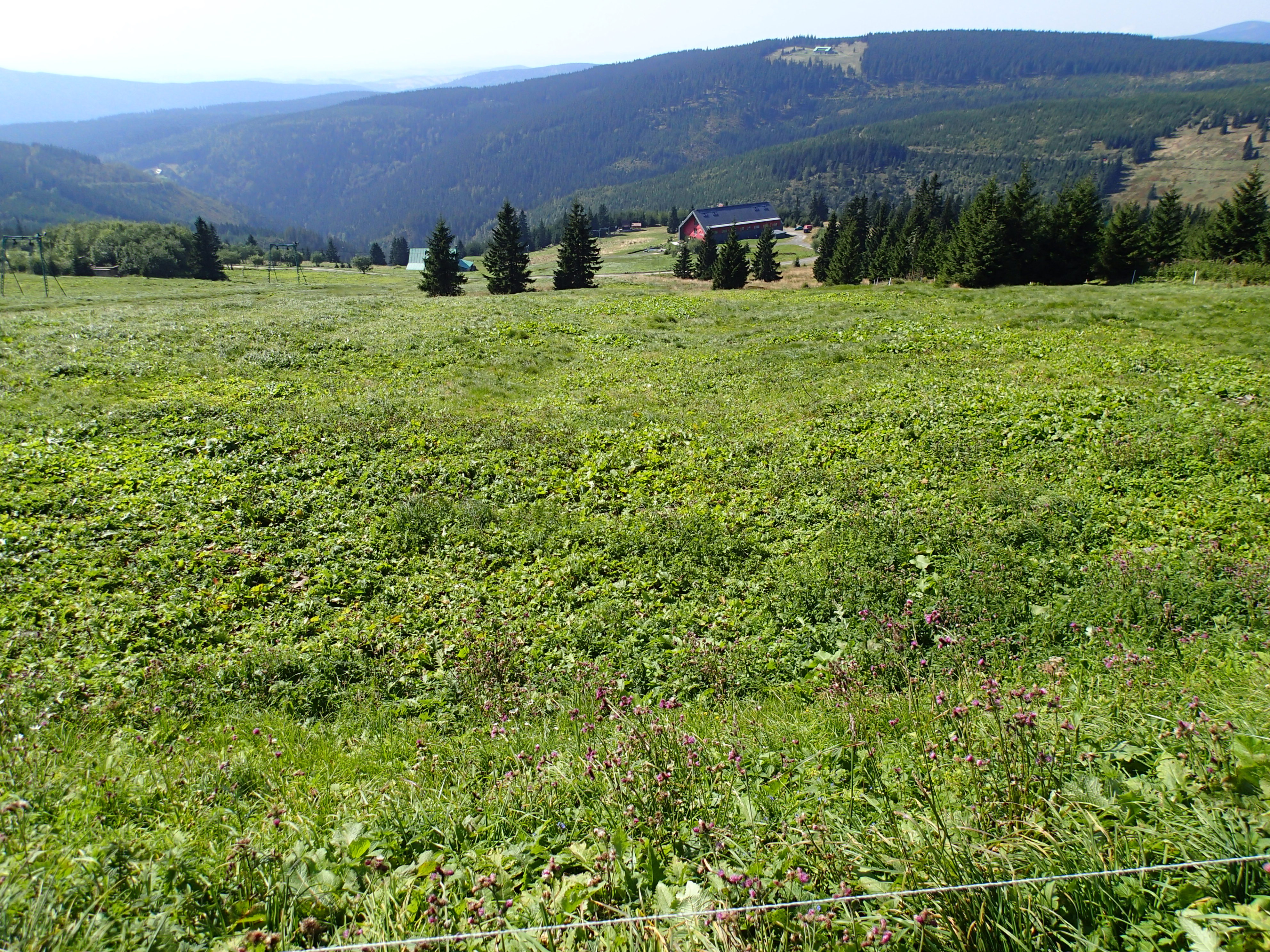
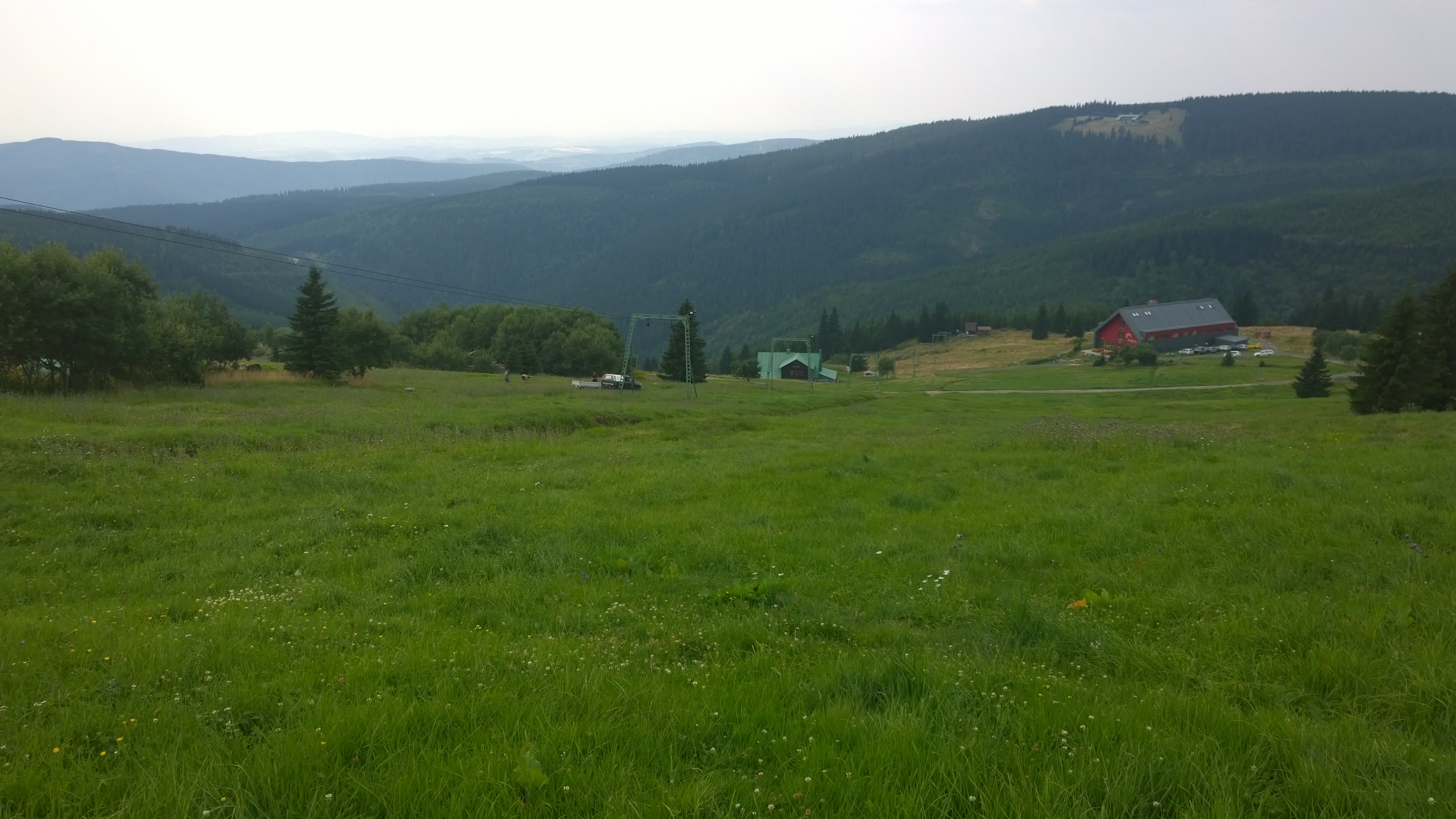
We succeeded in making interventions on 4.5 ha affected by invasions. We cut away self-seeding on 15 ha, particularly at Sklenářovice and Friesovy Boudy. We also restored the hydraulic regime in 6.5 km of streams. We also moved lots of stones and gravel in meadows. We removed 92 tonnes. A new job arose in the autumn under this activity, namely fertilisation. We spread small quantities of compost over 28 ha of meadows.
The figure is the achievement of both our field working group and external contractors with whom we made framework agreements.
Works on farming plans started; they are plans for considerate management. Most of the 10 agreed plans have been implemented on at least parts of the farms, and other works were contracted (activity C5).
We continue managing two sites with presence of the rare dwarf gentian (activity C6). The numbers of flowering individuals and juvenile plants is monitored annually; we counted 44 individuals this year.
We have completed measure supporting the European bullhead (activity C7) in the entire Albeřický brook, and we have handed over the construction site of the Bolkovský brook.
We are continuing the data collection for monitoring of biotopes and selected species in 29 priority enclaves and farms, and we continue monitoring the European bullhead (activities D).
The project promotion was abundant this year too (activities E).
In the course of the year, you could read about the project and its activities in three press releases and 17 articles, watch one TV news story and listen to an interview for the Czech Radio in Hradec Králové.
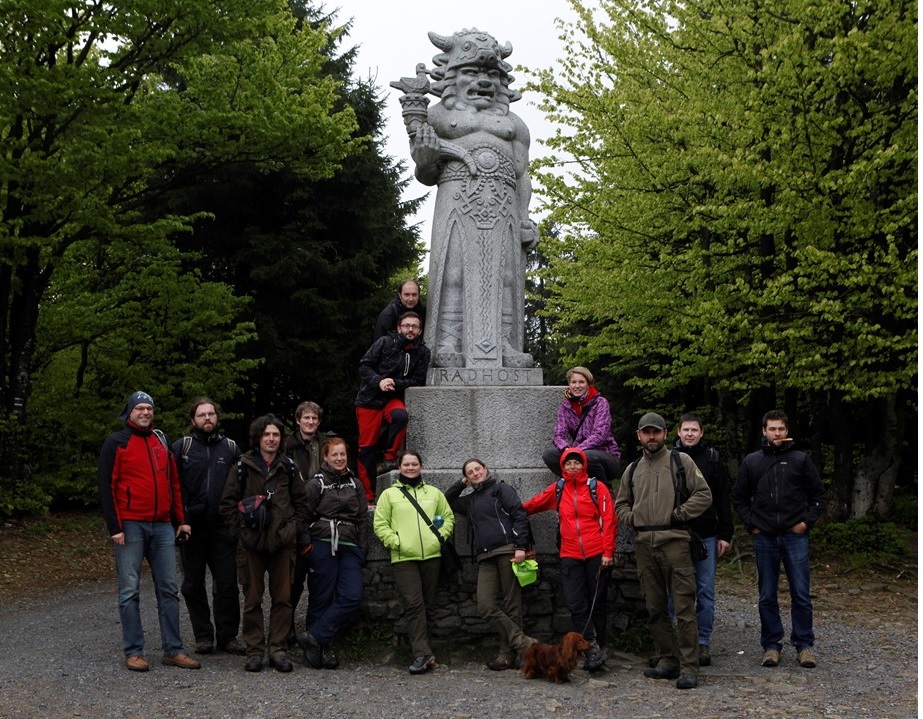
We visited three LIFE+ projects in the Czech Republic. Namely, these were LIFE Rupicolous (LIFE04 NAT/CZ/000015), LIFE Butterflies
CR - SR (LIFE09 NAT/CZ/000364) and Preservation of species-rich Nardus grasslands in Beskydy SCI (LIFE12 NAT/CZ/000629),
where we came across different approaches to meadow
management and overall project progress and were enriched with
new findings.
We published a new booklet, a management manual entitled Pestrolučník krkonošský, which explains both the various activities and good practice and negative aspects of some of the commonly used techniques.
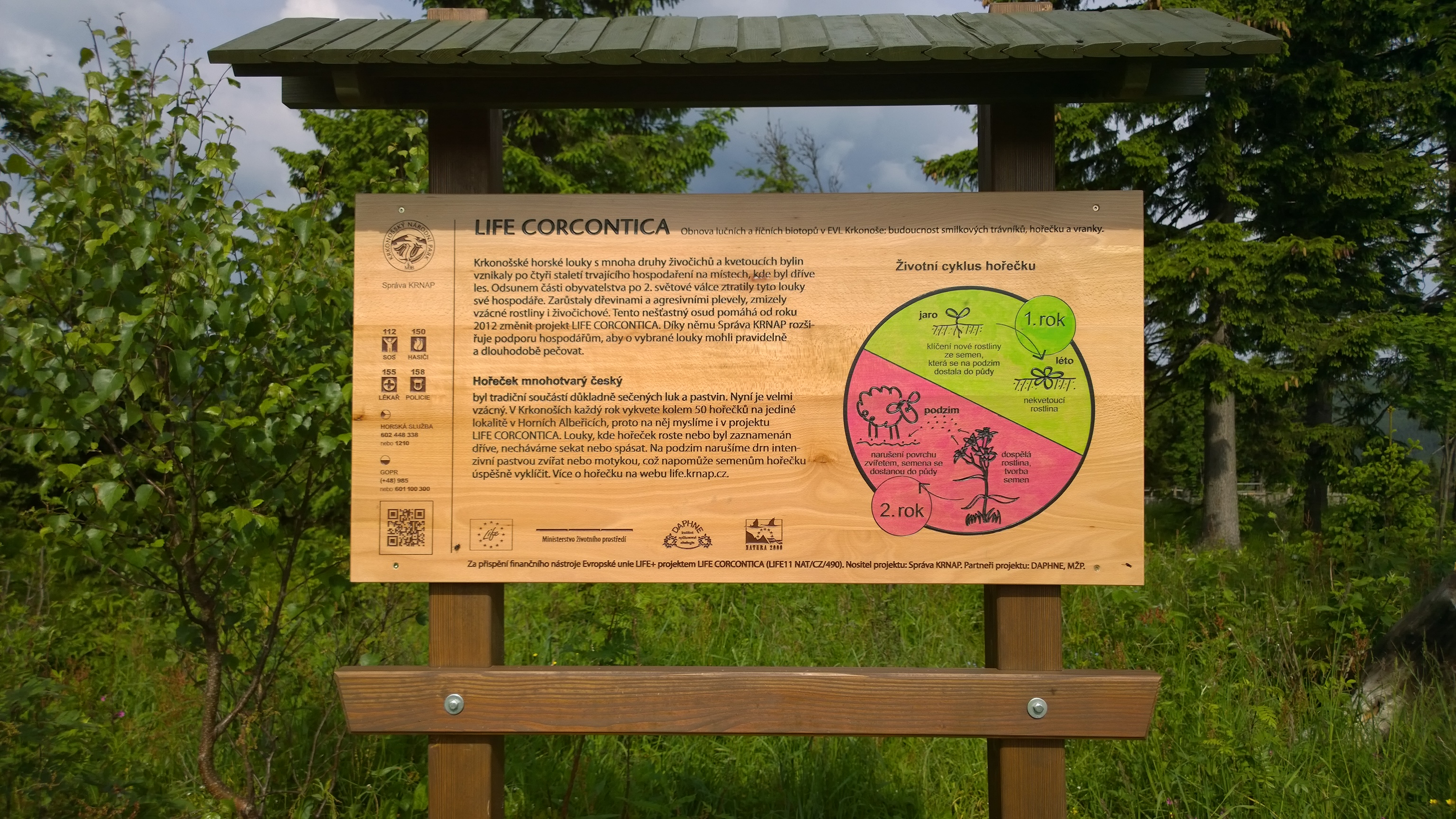
We installed wooden information panels that explain the various activities in the meadows and their importance. For the winter, we moved the panels to wintering sites at local workplaces, and they will be installed back in the spring.
Picture postcards with the Krkonoše enclaves have been printed successfully and are now being distributed.
Our project sheep again stood by our meadow enclaves, informing about the project activities. We inventoried the sheep in the autumn, finding four of them destroyed or stolen.
The most important event of the late summer (besides inspections of management works in the field) was the compilation and submission of an extensive Progress Report on the project activities to the European Commission.
We organised a meeting for farmers in selected meadow enclaves. They were introduced to autumn management of meadows. The following discussion brought interesting moments and hopefully an intersection of views on management from the conservation and agricultural perspectives.
